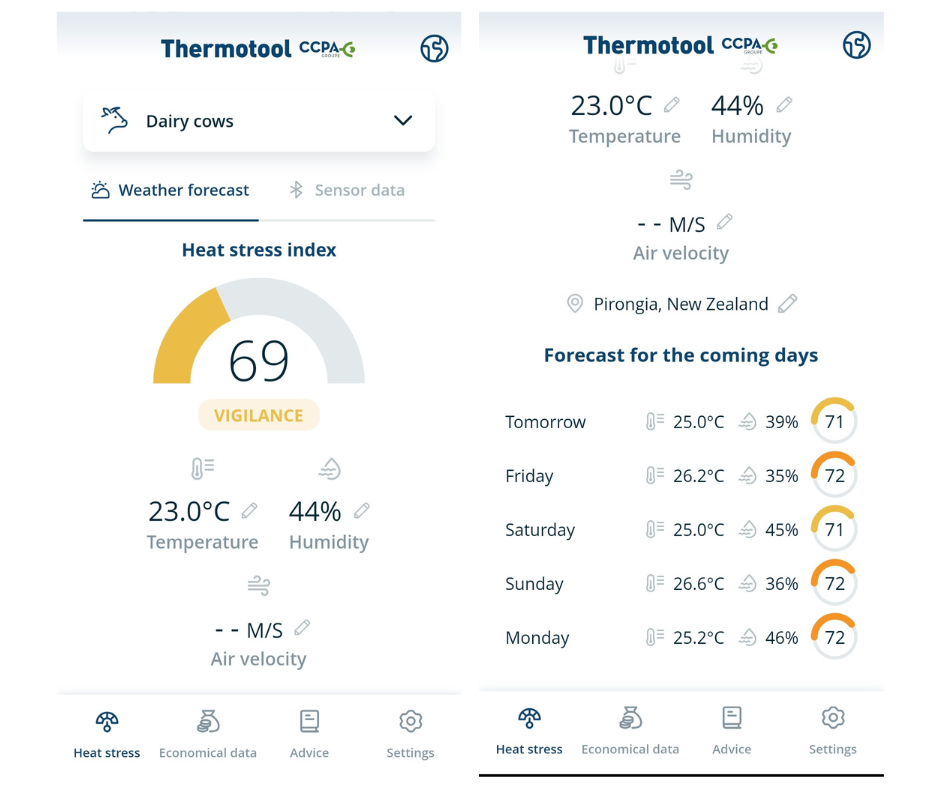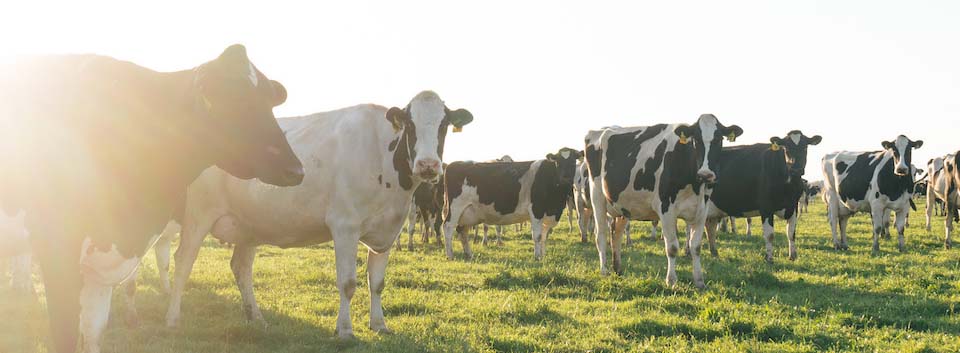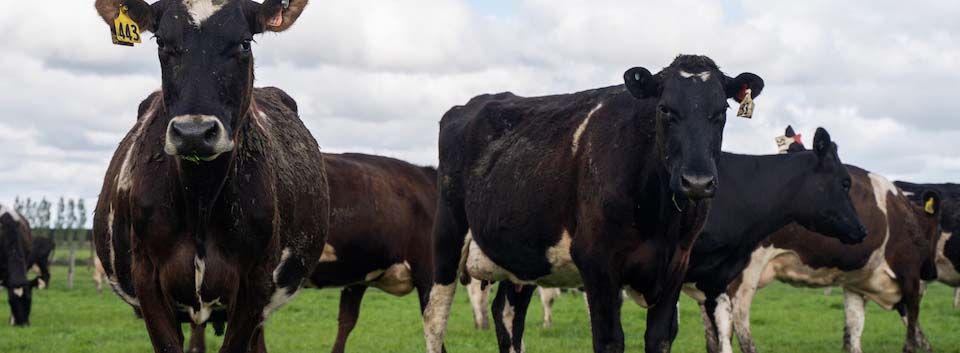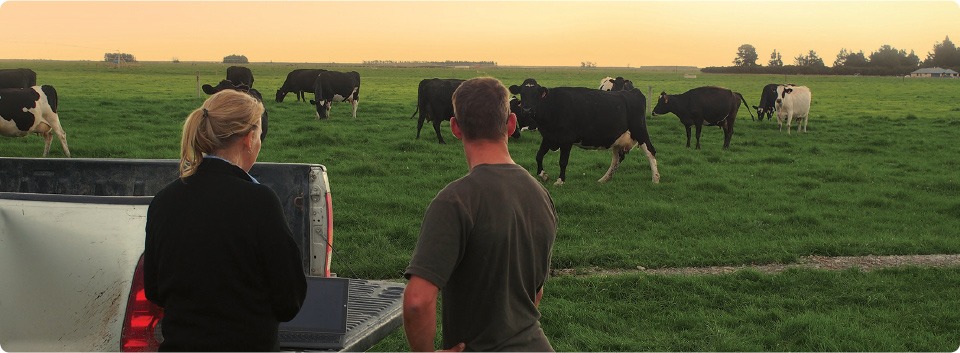Heat stress in dairy cows isn’t just about temperature – it’s a combination of temperature, humidity, solar radiation, and wind. Even mild heat stress can impact a cow’s milk production, feed intake, and overall health, leading to financial losses. New Zealand research shows heat stress costs around 6kg MS per cow in the Waikato, equating to $30,000 lost on a 600-cow dairy farm – and this cost does not losses in pregnancy. By predicting heat stress, farmers can take preventative measures to reduce its impact before cows start showing signs of distress.
Predicting heat stress in local conditions
The Temperature Humidity Index (THI) is an international tool used to estimate the risk of heat stress. It combines temperature and humidity to determine whether cows are at risk. Research shows cows start to show visible signs of heat stress when the THI reaches 69. This can include increased respiration, panting, standing for long periods, and reduced feed intake.
Research shows New Zealand’s largely outdoor grazing ruminants would benefit from a more specific heat stress prediction model. This has led to the development of the Grazing Heat Load Index (GHLI). This index is still in development so not available in commercial use yet, but it highlights the need for prediction tools tailored to local conditions. The hope is that the GHLI will give us a better prediction tool to help reduce the significant cost of heat stress to New Zealand’s agricultural industry each year.
Why prevention is better than reaction
Heat stress doesn’t just happen in an instant – it builds up over time when cows can’t cool down properly between heat events. If high temperatures persist overnight or for consecutive days it leads to compounding effects on production and health. If we can predict a heat event, we can put preventative measures in place to help keep our cows comfortable and minimise productive losses.
When a heat event is forecast:
- Adjust grazing plans: Move cows to shaded paddocks or sheltered areas BEFORE peak heat hours, plan for a shorter walk to/from the cowshed in the afternoon, and allocate the best quality feed during the coolest hours of the night/day.
- Ensure water access: Provide multiple clean water sources to encourage hydration. If water in the paddock is limited, set up troughs at the exit of the shed or down the race.
- Change feed strategy: Reduce high-fibre feeds that generate excess rumen heat and increase the energy density of the diet, while protecting the rumen and liver with key supplements.
- Use water and increase air movement: Cooling down the concrete yard with water before cows come in and setting up sprinklers (with heavy droplets, so water starts to run down the cow) at the yard helps the cow to cool. If cows are housed, ensure good ventilation and consider cooling strategies like shade or fans.
Managing pasture toxins
Pasture toxins can cause vasoconstriction (narrowing of the blood vessels which reduces blood flow, particularly to the extremities of the cow), reducing the cow’s ability to cool herself. This means cows may show signs of heat stress even when the THI is lower than expected due to toxin exposure. Warning signs are a change in cow behaviour coupled with a change in the pasture (increased seedhead, dead-matter etc.) and other indicators can be increased lameness, walking slowly to shed. If in doubt, the easiest way to diagnose a pasture toxin issue is to use a good quality toxin binder and see if the cows improve.
Preventative measures protect animal health and profitability
By predicting heat stress a week in advance and taking early preventative action, farmers can avoid production losses, protect animal wellbeing, and maintain profitability. A reactive approach is costly, but proactive management ensures cows stay cool, comfortable, in-calf, and productive throughout the summer months. Agvance’s ruminant nutritionist, Shaun Balemi, uses the ThermoTool app. Give it a try and let us know what you think.
For more information about beating heat stress, talk to your vet or your local Agvance consultant today, or explore our supplement solutions here.




